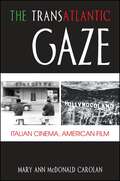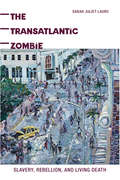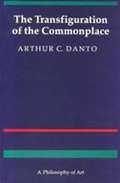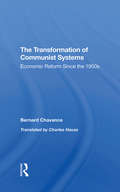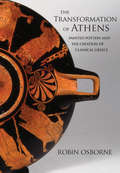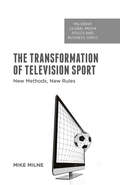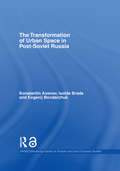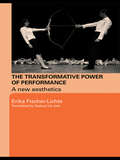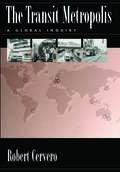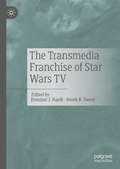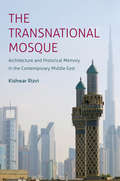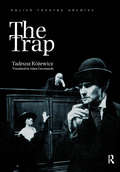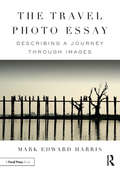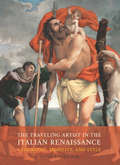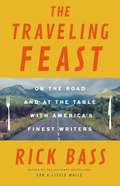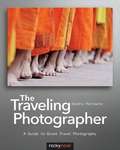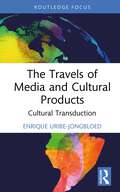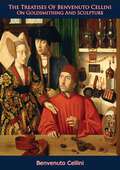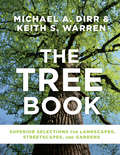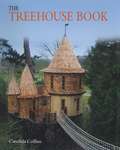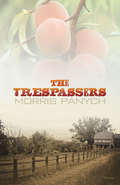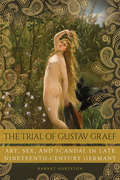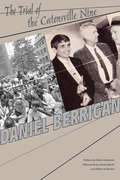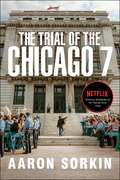- Table View
- List View
The Transatlantic Gaze: Italian Cinema, American Film (SUNY series in Italian/American Culture)
by Mary Ann McDonald CarolanIn The Transatlantic Gaze, Mary Ann McDonald Carolan documents the sustained and profound artistic impact of Italian directors, actors, and screenwriters on American film. Working across a variety of genres, including neorealism, comedy, the Western, and the art film, Carolan explores how and why American directors from Woody Allen to Quentin Tarantino have adapted certain Italian trademark techniques and motifs. Allen's To Rome with Love (2012), for example, is an homage to the genius of Italian filmmakers, and to Federico Fellini in particular, whose Lo sceicco bianco/The White Sheik (1952) also resonates with Allen's The Purple Rose of Cairo (1985) as well as with Neil LaBute's Nurse Betty (2000). Tarantino's Kill Bill saga (2003, 2004) plays off elements of Sergio Leone's spaghetti Western C'era una volta il West/Once Upon a Time in the West (1968), a transatlantic conversation about the Western that continues in Tarantino's Oscar-winning Django Unchained (2012). Lee Daniels's Precious (2009) and Spike Lee's Miracle at St. Anna (2008), meanwhile, demonstrate that the neorealism of Roberto Rossellini and Vittorio De Sica, which arose from the political and economic exigencies of postwar Italy, is an effective vehicle for critiquing social issues such as poverty and racism in a contemporary American context. The book concludes with an examination of American remakes of popular Italian films, a comparison that offers insight into the similarities and differences between the two cultures and the transformations in genre, both subtle and obvious, that underlie this form of cross-cultural exchange.
The Transatlantic Zombie: Slavery, Rebellion, and Living Death
by Sarah J. LauroOur most modern monster and perhaps our most American, the zombie that is so prevalent in popular culture today has its roots in African soul capture mythologies. The Transatlantic Zombie provides a more complete history of the zombie than has ever been told, explaining how the myth's migration to the New World was facilitated by the transatlantic slave trade, and reveals the real-world import of storytelling, reminding us of the power of myths and mythmaking, and the high stakes of appropriation and homage. Beginning with an account of a probable ancestor of the zombie found in the Kongolese and Angolan regions of seventeenth-century Africa and ending with a description of the way, in contemporary culture, new media are used to facilitate zombie-themed events, Sarah Juliet Lauro plots the zombie's cultural significance through Caribbean literature, Haitian folklore, and American literature, film, and the visual arts. The zombie entered US consciousness through the American occupation of Haiti, the site of an eighteenth-century slave rebellion that became a war for independence, thus making the figuration of living death inseparable from its resonances with both slavery and rebellion. Lauro bridges African mythology and US mainstream culture by articulating the ethical complications of the zombie's invocation as a cultural conquest that was rebranded for the American cinema. As The Transatlantic Zombie shows, the zombie is not merely a bogeyman representing the ills of modern society, but a battleground over which a cultural war has been fought between the imperial urge to absorb exotic, threatening elements, and the originary, Afro-disaporic culture's preservation through a strategy of mythic combat.
The Transfiguration of the Commonplace: A Philosophy of Art
by Arthur C. DantoMr. Danto argues that recent developments in the artworld, in particular the production of works of art that cannot be told from ordinary things, make urgent the need for a new theory of art and make plain the factors such a theory can and cannot involve. In the course of constructing such a theory, he seeks to demonstrate the relationship between philosophy and art, as well as the connections that hold between art and social institutions and art history.
The Transformation Of Communist Systems: Economic Reform Since The 1950s
by Charles Hauss Mark Selden Bernard ChavanceIn the confrontation between the two main economic systems that has marked the twentieth century, capitalism has been declared the winner–by default– over its adversary, socialism. Today, establishing a market economy has become the primary goal of the formerly socialist countries. The history of economic reform helps explain this remarkable turning point. Attempts to improve the old centralized system by expanding enterprise autonomy (in Poland, the Soviet Union, and East Germany) and more radical reforms that limited the role of central planning (in Yugoslavia, Czechoslovakia, Hungary, and China) encountered social and political obstacles or had unexpected and undesired effects. During the 1980s, the idea of a socialist market economy, which had been seen as a "third way" between capitalism and centralized socialism, was abandoned as economists gradually came to support a free market rather than the dogma of planning. Through a comparative and historical analysis of change in socialist and post-socialist systems, this timely and original book clarifies the policies and pitfalls in this extraordinary transition. Bernard Chavance provides a succinct introduction and analysis of the politics and economics of Eastern Europe from the creation of the Stalinist system in the Soviet Union through what he argues have been three major waves of reform since the 1950s to the dismantling of most socialist governments in the 1990s. Exploring the link between the one-party regime and the growing rigidity of socialist economic systems, the author analyzes the failure of both incremental and radical reforms to adapt to new economic challenges, thus leading to the ultimate collapse of communist regimes in Europe.
The Transformation of Athens: Painted Pottery and the Creation of Classical Greece
by Robin OsborneHow remarkable changes in ancient Greek pottery reveal the transformation of classical Greek cultureWhy did soldiers stop fighting, athletes stop competing, and lovers stop having graphic sex in classical Greek art? The scenes depicted on Athenian pottery of the mid-fifth century BC are very different from those of the late sixth century. Did Greek potters have a different world to see—or did they come to see the world differently? In this lavishly illustrated and engagingly written book, Robin Osborne argues that these remarkable changes are the best evidence for the shifting nature of classical Greek culture.Osborne examines the thousands of surviving Athenian red-figure pots painted between 520 and 440 BC and describes the changing depictions of soldiers and athletes, drinking parties and religious occasions, sexual relations, and scenes of daily life. He shows that it was not changes in each activity that determined how the world was shown, but changes in values and aesthetics.By demonstrating that changes in artistic style involve choices about what aspects of the world we decide to represent as well as how to represent them, this book rewrites the history of Greek art. By showing that Greeks came to see the world differently over the span of less than a century, it reassesses the history of classical Greece and of Athenian democracy. And by questioning whether art reflects or produces social and political change, it provokes a fresh examination of the role of images in an ever-evolving world.
The Transformation of Television Sport: New Methods, New Rules (Palgrave Global Media Policy and Business)
by M. MilneThe Transformation of Television Sport: New Methods, New Rules examines how developments in technology, broadcasting rights and regulation combine to determine what sport we see on television, where we can see it and what the final output looks and sounds like.
The Transformation of Urban Space in Post-Soviet Russia (BASEES/Routledge Series on Russian and East European Studies #Vol. 30)
by Isolde Brade Konstantin Axenov Evgenij BondarchukIn the years since 1989, the societies of Russia and Eastern Europe have undergone a remarkable transformation from socialism to democracy and free market capitalism. Making an important contribution to the theoretical literature of urbanism and post-communist transition, this significant book considers the change in the spatial structure of post-Soviet urban spaces since the period of transition began. It argues that the era of transformation can be considered as largely complete, and that this has given way to a new stage of development as part of the global urban and economic system: post-transformation. The authors examine the modern trends in the urban development of western and post-socialist countries, and explore the theories of the transformation and post-transformation of urban space. Providing a wealth of detailed qualitative research on the Russian city of St. Petersburg, the study examines the changing structure of its retail trade and services sector. Overall, this book is an important step forward in the study of the spatial dynamics of urban transformation in the former communist world.
The Transformative Power of Performance: A New Aesthetics
by Erika Fischer-LichteIn this book, Erika Fischer-Lichte traces the emergence of performance as 'an art event' in its own right. In setting performance art on an equal footing with the traditional art object, she heralds a new aesthetics. The peculiar mode of experience that a performance provokes – blurring distinctions between artist and audience, body and mind, art and life – is here framed as the breeding ground for a new way of understanding performing arts, and through them even wider social and cultural processes. With an introduction by Marvin Carlson, this translation of the original Ästhetik des Performativen addresses key issues in performance art, experimental theatre and cultural performances to lay the ground for a new appreciation of the artistic event.
The Transit Metropolis: A Global Inquiry
by Robert CerveroAround the world, mass transit is struggling to compete with the private automobile, and in many places, its market share is rapidly eroding. Yet a number of metropolitan areas have in recent decades managed to mount cost-effective and resource-conserving transit services that provide respectable alternatives to car travel. What sets these places apart? In this book, noted transportation expert Robert Cervero provides an on-the-ground look at more than a dozen mass transit success stories, introducing the concept of the "transit metropolis"--a region where a workable fit exists between transit services and urban form. Cervero has studied cities around the world, and he makes a compelling case that metropolitan areas of any size and with any growth pattern can develop successful mass transit systems. Following an introduction that frames his argument and outlines the main issues, Cervero examines five different types of transit metropolises, with in-depth case studies of cities that represent each type. He considers the lessons of the case studies and debunks widely held myths about transit and the city. In addition, he reviews transit program efforts underway in five North American cities and discusses the factors working for and against their success. Cities profiled include Stockholm; Singapore; Tokyo; Ottawa; Zurich; Melbourne; Mexico City; Curitiba, Brazil; Portland, Oregon; and Vancouver, British Columbia. The Transit Metropolis provides practical lessons on how North American cities can manage sprawl and haphazard highway development by creating successful mass transit systems. While many books discuss the need for a sustainable transportation system, few offer examples of successful systems and provide the methods and tools needed to create such a system. This book is an invaluable resource for transportation planners and professionals, urban planners and designers, policymakers, and students of urban design and planning.
The Transmedia Franchise of Star Wars TV
by Dominic J. Nardi Derek R. SweetWhile previous work on the Star Wars universe charts the Campbellian mythic arcs, political representations, and fan reactions associated with the films, this volume takes a transmedial approach to the material, recognizing that Star Wars TV projects interact with and relate to other Star Wars texts. The chapters in this volume take as a basic premise that the televisual entrants into the Star Wars transmedia storyworld are both important texts in the history of popular culture and also key to understanding how the Star Wars franchise—and, thus, industry-wide transmedia storytelling strategies—developed. The book expands previous work to consider television studies and sharp cultural criticism together in an effort to bring both long-running popular series, long-ignored texts, and even toy commercials to bear on the franchise’s complex history.
The Transnational Mosque: Architecture and Historical Memory in the Contemporary Middle East (Islamic Civilization and Muslim Networks)
by Kishwar RizviKishwar Rizvi, drawing on the multifaceted history of the Middle East, offers a richly illustrated analysis of the role of transnational mosques in the construction of contemporary Muslim identity. As Rizvi explains, transnational mosques are structures built through the support of both government sponsorship, whether in the home country or abroad, and diverse transnational networks. By concentrating on mosques--especially those built at the turn of the twenty-first century--as the epitome of Islamic architecture, Rizvi elucidates their significance as sites for both the validation of religious praxis and the construction of national and religious ideologies.Rizvi delineates the transnational religious, political, economic, and architectural networks supporting mosques in Saudi Arabia, Iran, Turkey, and the United Arab Emirates, as well as in countries within their spheres of influence, such as Pakistan, Syria, and Turkmenistan. She discerns how the buildings feature architectural designs that traverse geographic and temporal distances, gesturing to far-flung places and times for inspiration. Digging deeper, however, Rizvi reveals significant diversity among the mosques--whether in a Wahabi-Sunni kingdom, a Shi&8219;i theocratic government, or a republic balancing secularism and moderate Islam--that repudiates representations of Islam as a monolith. Mosques reveal alliances and contests for influence among multinational corporations, nations, and communities of belief, Rizvi shows, and her work demonstrates how the built environment is a critical resource for understanding culture and politics in the contemporary Middle East and the Islamic world.
The Transparent State: Architecture and Politics in Postwar Germany
by Deborah Ascher BarnstoneExamining the transformation of transparency as a metaphor in West German political thought to an analogy for democratic architecture, this book questions the prevailing assumption in German architectural circles that transparency in governmental buildings can be equated with openness, accessibility and greater democracy.The Transparent State traces the development of transparency in German political and architectural culture, tying this lineage to the relationship between culture and national identity, a connection that began before unification of the German state in the eighteenth century and continues today. The Weimar Republic and Third Reich periods are examined although the focus is on the postwar period, looking at the use of transparency in the three projects for a national parliament - the 1949 Bundestag project by Hans Schwippert, the 1992 Bundestag building by Gunter Behnisch and the 1999 Reichstag renovation by Norman Foster.Transparency is an important issue in contemporary architectural practice; this book will appeal to both the practising architect and the architectural historian.
The Trap
by Tadeusz RosewiczFirst Published in 1998. Routledge is an imprint of Taylor & Francis, an informa company.
The Travel Photo Essay: Describing a Journey Through Images
by Mark Edward HarrisSuccessful travel photographers have to wear more hats than perhaps any other photographic genre. In a single travel photo essay they are at times architectural photographers, food photographers, music photographers, car photographers – the list encompassing every possible type of photography. The Travel Photo Essay teaches the reader the necessary techniques to create cohesive professional travel stories, using images that go far beyond "I was here" photographs. From the establishing shots to the equipment list, this book discusses the techniques and concepts necessary to create professional looking images in various genres, including portrait photography, landscape photography, wildlife photography, food photography, documentary photography, sports photography and more. Covering issues such as lighting, writing, workflow and the travel photography market, award-winning photographer and writer Mark Edward Harris explains how to marry photos with words, telling a cohesive story through a series of photographs.
The Traveling Artist in the Italian Renaissance
by David Young KimThis important and innovative book examines artists' mobility as a critical aspect of Italian Renaissance art. It is well known that many eminent artists such as Cimabue, Giotto, Donatello, Lotto, Michelangelo, Raphael, and Titian traveled. This book is the first to consider the sixteenth-century literary descriptions of their journeys in relation to the larger Renaissance discourse concerning mobility, geography, the act of creation, and selfhood. David Young Kim carefully explores relevant themes in Giorgio Vasari's monumental Lives of the Artists, in particular how style was understood to register an artist's encounter with place. Through new readings of critical ideas, long-standing regional prejudices, and entire biographies, The Traveling Artist in the Italian Renaissance provides a groundbreaking case for the significance of mobility in the interpretation of art and the wider discipline of art history.
The Traveling Feast: On the Road and at the Table with My Heroes
by Rick BassAcclaimed author Rick Bass decided to thank all of his writing heroes in person, one meal at a time, in this "rich smorgasbord of a memoir . . . a soul-nourishing, road-burning act of tribute" (New York Times Book Review). "Exuberant . . . A classic . . . This is a rich bounty of a book." --Publishers Weekly (starred review)"A master."--Boston Globe "One of the very best writers we have."--San Francisco Chronicle "Both mythic and intimate . . . A virtuoso."--O: The Oprah Magazine "The beauty of his sentences recalls the stylistic finesse of Cormac McCarthy and Willa Cather."--Chicago TribuneFrom his bid to become Eudora Welty's lawn boy to the time George Plimpton offered to punch him in the nose, lineage has always been important to Rick Bass. Now at a turning point--in his midfifties, with his long marriage dissolved and his grown daughters out of the house--Bass strikes out on a journey of thanksgiving. His aim: to make a memorable meal for each of his mentors, to express his gratitude for the way they have shaped not only his writing but his life. The result, an odyssey to some of America's most iconic writers, is also a record of self-transformation as Bass seeks to recapture the fire that drove him as a young man. Along the way we join in escapades involving smuggled contraband, an exploding grill, a trail of blood through Heathrow airport, an episode of dog-watching with Amy Hempel in Central Park, and a near run-in with plague-ridden prairie dogs on the way to see Lorrie Moore, as well as heartwarming and bittersweet final meals with the late Peter Matthiessen, John Berger, and Denis Johnson. Poignant, funny, and wistful, The Traveling Feast is a guide to living well and an unforgettable adventure that nourishes and renews the spirit.
The Traveling Photographer
by Sandra PetrowitzTraveling and photography is a perfect match, but photographers are often disappointed that their images fail to meet the quality of their artistic aspirations. This book combines theoretical information, practical advice, and helpful suggestions for taking better pictures while traveling, whether you are on a local trip, enjoying your annual summer vacation or exploring a more exotic, remote destination. This book includes descriptions for how to carefully compose photos, avoid common mistakes, and achieve a unique perception of places that have been photographed many times before. Beautifully illustrated with photographs from all over the world, this guide will help you find your personal point of view, which will lead to exceptional travel photos.
The Travels of Media and Cultural Products: Cultural Transduction (Routledge Studies in Media and Cultural Industries)
by Enrique Uribe-JongbloedThis book presents the Cultural Transduction framework as a conceptual tool to understand the processes that media and cultural products undergo when they cross cultural and national borders. Using a series of examples from pop culture, including films, television series, video games, memes and other digital products, this book provides the reader with a wider understanding of the procedures, interests, roles, assumptions and challenges, which foster or hinder the travels of media and cultural products. Compiling in one single narrative a series of case studies, theoretical debates and international examples, the book looks at a number of exchanges and transformations enabled by both traditional media trade and the internet. It reflects on the increase of cultural products crossing over regional, national and international borders in the form of video games and TV formats, through music and video distribution platforms or via digital social media networks, to highlight discussions about the characteristics of border-crossing digital production. The cultural transduction framework is developed from discussions in communication and media studies, as well as from debates in adaptation and translation studies, to map out the travels of media and cultural products from an interdisciplinary perspective. It provides a tool to analyse the markets, products, people and processes that enable or constrain the movement of products across borders, for those interested in the practical aspects that underlie the negotiation and transformation of products inserted into different cultural market settings. This volume provides a new framework for understanding the travels of cultural products, which will be of use to students and scholars in the area of media industry studies, business studies, digital media studies, international media law and economics.
The Treatises of Benevenuto Cellini on Goldsmithing and Sculpture
by Benvenuto CelliniBenvenuto Cellini was born in Florence, Italy, on November 1, 1500. He became a celebrated sculptor, goldsmith, and author, but his fierce temper caused him to be exiled and imprisoned for numerous crimes, the most serious being murder. Among Cellini's best work as a sculptor was a gold saltcellar made for Francis I of France, and a colossal bronze statue titled Perseus and Medusa. Other significant works include a bust of Cosimo I de Medici and Ganymede on the Eagle, both of which are now housed in the Bargello Museum in Florence. Cellini is best known for his memoirs, The Autobiography of Benvenuto Cellini, which he wrote from 1558 to 1562 and was published after his death. He died on February 13, 1571.
The Tree Book: Superior Selections for Landscapes, Streetscapes, and Gardens
by Michael A. Dirr Keith S. Warren“A boon to all those who plant, care for, and love trees.”—Nina Bassuk, author of Trees in the Urban Landscape The Tree Book is the go-to reference to more than 2,400 species and cultivars, from two of the biggest names in horticulture—Michael A. Dirr and Keith S. Warren. The featured trees include those widely available in the nursery trade, some new and promising choices, and a selection of overlooked options that deserve renewed interest. Each tree profile includes the common and botanical names along with details on foliage; flowers, seeds, fruits, and cones; native range; adaptability; and popular uses in landscapes. The Tree Book is a must-have resource for landscapes architects, city foresters, horticulturists, and enthusiastic home gardeners.
The Treehouse Book
by Candida CollinsThe Treehouse Book is a global round-up of the best in modern treehouse living. Tree houses have come of age. The image of a few planks nailed into the branches of a tree has changed into a new generation of specially designed and built structures, suitable as a playhouse, a study, or even a guestroom. Totally inhabitable and filled with designer furniture, plumbing, and electronic wizardry, the twenty tree houses featured in this book are to be admired, dreamed about, and even built. Featuring spectacular photography of exteriors set up among the trees, and interior shots that offer design ideas for living the &“high&” life, The Treehouse Book offers a fairy tale castle, a thatched cottage, a complete hotel, and much more. Each project was designed using computer technology and built using sustainable materials to create structures that only seem like fantasy. Each is cleverly fitted to the chosen trees, avoiding long-term damage to these remarkable structures. With a section on plans and building techniques to help the competent reader design and build a fabulous tree house for him or herself, The Treehouse Book will inspire everyone to dream about what life would be like leaving all cares and worries behind and below. From basic cabins suspended in the trees, to the unbelievable "High-Tech Hideaway," The Treehouse Book may inspire us to commission the retreat of our dreams ... or to get out the hammer and nails!
The Trespassers
by Morris PanychLowell is no average teenager-and his grandfather, Hardy, is no conventional role model. Hardy may once have owned the abandoned orchard at the heart of town where they spend time trespassing and discussing ethics as if it were nothing more than a game. When inspector Milton shows up to investigate a murder, Lowell's truths are put to the ultimate test.
The Trial of Gustav Graef: Art, Sex, and Scandal in Late Nineteenth-Century Germany
by Barnet HartstonAlthough largely forgotten now, the 1885 trial of German artist Gustav Graef was a seminal event for those who observed it. Graef, a celebrated sixty-four-year-old portraitist, was accused of perjury and sexual impropriety with underage models. On trial alongside him was one of his former models, the twenty-one-year-old Bertha Rother, who quickly became a central figure in the affair. As the case was being heard, images of Rother, including photographic reproductions of Graef's nude paintings of her, began to flood the art shops and bookstores of Berlin and spread across Europe. Spurred by this trade in images and by sensational coverage in the press, this former prostitute was transformed into an international sex symbol and a target of both public lust and scorn. Passionate discussions of the case echoed in the press for months, and the episode lasted in public memory for far longer. The Graef trial, however, was much more than a salacious story that served as public entertainment. The case inspired fierce political debates long after a verdict was delivered, including disputes about obscenity laws, the moral degeneracy of modern art and artists, the alleged pernicious effects of Jewish influence, legal restrictions on prostitution, the causes of urban criminality, the impact of sensationalized press coverage, and the requirements of bourgeois masculine honor. Above all, the case unleashed withering public criticism of a criminal justice system that many Germans agreed had become entirely dysfunctional. The story of the Graef trial offers a unique perspective on a German Empire that was at the height of its power, yet riven with deep political, social, and cultural divisions. This compelling study will appeal to historians and students of modern German and European history, as well as those interested in obscenity law and class and gender relations in nineteenth-century Europe.
The Trial of the Catonsville Nine
by Daniel BerriganOn May 17, 1968, at the height of the Vietnam War, nine men and women entered a Selective Service office outside Baltimore. They removed military draft records, took them outside, and set them afire with napalm. The Catholic activists involved in this protest against the war included Daniel and Philip Berrigan; all were found guilty of destroying government property and sentenced to three years in jail. Dan Berrigan fled but later turned himself in.The Trial of the Catonsville Nine became a powerful expression of the conflicts between conscience and conduct, power and justice, law and morality. Drawing on court transcripts, Berrigan wrote a dramatic accountof the trial and the issues it so vividly embodied. The result is a landmark work of art that has been performed frequently over the past thirty-five years, both as a piece of theater and a motion picture.
The Trial of the Chicago 7: The Screenplay
by Aaron SorkinThe brilliant screenplay of the forthcoming film The Trial of the Chicago 7 by Academy and Emmy Award–winning screenwriter and director Aaron Sorkin.Sorkin&’s film dramatizes the 1969 trial of seven prominent anti-Vietnam War activists in Chicago. Originally there were eight defendants, but one, Bobby Seale, was severed from the trial by Judge Julius Hoffman—after Hoffman had ordered Seale bound and gagged in court. The defendants were a mix of counterculture revolutionaries such as Abbie Hoffman and Jerry Rubin, and political activists such as Tom Hayden, Rennie Davis, and David Dellinger, the last a longtime pacifist who was a generation older than the others. Their lawyers argued that the right to free speech was on trial, whether that speech concerned lifestyles or politics. The Trial of the Chicago 7 stars Sacha Baron Cohen, Eddie Redmayne, Frank Langella, and Mark Rylance, among others, directed by Aaron Sorkin. This book is Sorkin&’s screenplay, the first of his movie screenplays ever published.
